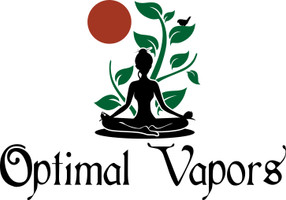Portable vaporizers have been on the rise in popularity lately and many herb-lovers are looking for the best dry herb vaporizer to fit their needs. They offer plenty of features that may sound great but which one does what you want it to do?
Vaping captures the tactile experience of smoking and the advantages of non-combustible, smokeless technology.
Thanks to advances in portable design and sophisticated heating methods, vapes are designed to fast-build internal conduction and convection current levels inside dry herbs as they heat. And while most value portability, there is one primary case where it would not be a good idea: on the go carry.
There are three major components that every vape has; a battery, an atomizer, and a mouthpiece. In addition to powering the heating element, it powers the atomizer coil and provides power to any other components they contain. Centrally located on top of this component will be the mouth-looking opening that uses a removable loading chamber below it for inserting your product intended for vaporization. Nearby you will find an activation button that activates the device.
Vaporizing is rapidly advancing to be the best way to consume cannabis products. A vaporizer converts dry herbs and plant material into a flavorful and potent experience for combustion pleasure offers relief of symptoms and side effects of various illnesses by way of lung irritation
It offers a cleaner, odorless, more effective way to get the desired effects from cannabis.
There are two types of vaporizers according to price ranges:
- Traditional Vaporizer: usually costs $50-$600 but lasts around 5 years or more
- Convection Vaporizer: usually cost $200-$1,000 but lasts up to 3 years or less
There are so many different types of portable vaporizers on the market today and deciding which one to buy can be a difficult decision. Here are some major factors to consider firsthand.
1. Material: Dry Herb Vaporizers are made up of four main components: chambers, mouthpiece, battery, and atomizer.
2. Power Source: The power source can be one or two batteries. They both come with their advantages and disadvantages, and it is best to decide according to your specific needs.
3. Temperature Control Settings need to be straight on for Dry Herb Vapes VS Variable Temperature Settings for Wax Oils
4.The Shape is a major factor in determining whether a device is right for your lifestyle or not. Some smaller sets may lack ranged temperature settings, instead of using the most effective preset one with three possible degrees that are often able to produce good quality vapor with little inhaling expertise.
Advances in vaping technology have ushered in a new era for communicators actively incorporating vaporizers into their creative spaces.
Some more factors to consider-
Bowl - Plenty of dry herbs can be loaded into the body of the dry herb vaporizer, and this should be avoided with weightier substances such as resins. The filter screen should hold your herb steady, as fine particles can clog.
Heating Methods - Conduction and Convection are very efficient heating techniques that are used to ensure great flavor and strong aspects in vapor density: conduction and convection. Conduction uses direct contact to heat the vaporizer, whereas vaporization by convection usually occurs when hot air moves over a coil submerged in water giving it a proper chance to cool off before coming into contact with the herbal material in a bag or chamber. You can choose what suits you best.
Vaporizers have come a long way since they were first patented. Nowadays, you can find lots of unique and newly updated options that are perfect for anyone who wants to take their vaporizing experience to the next level.

